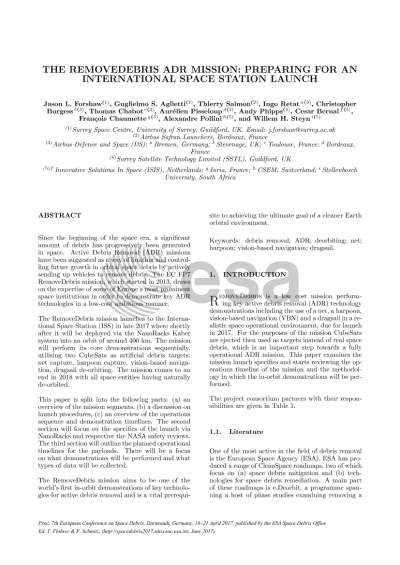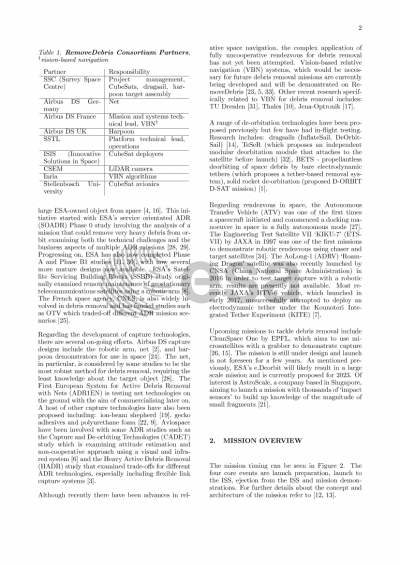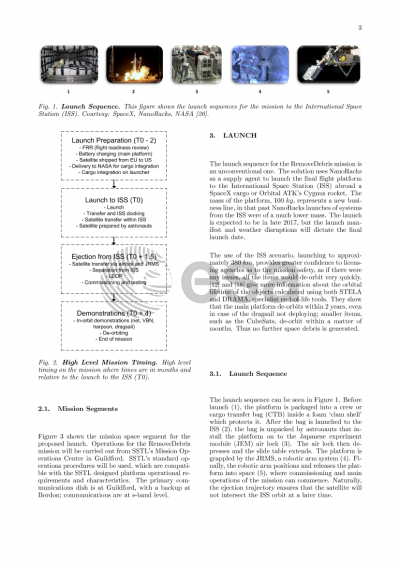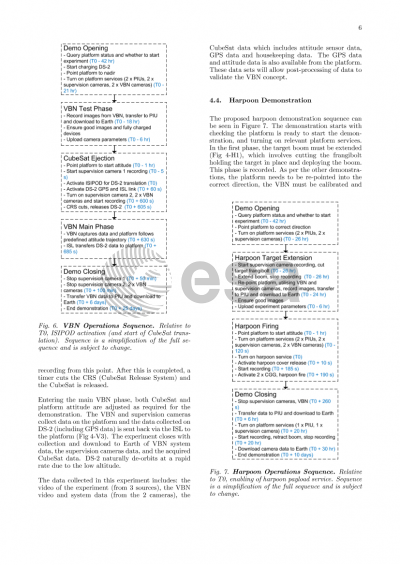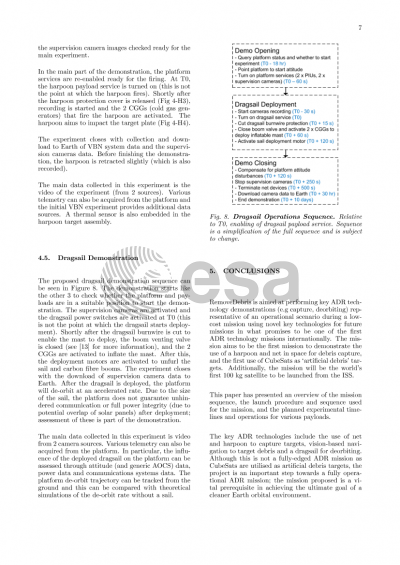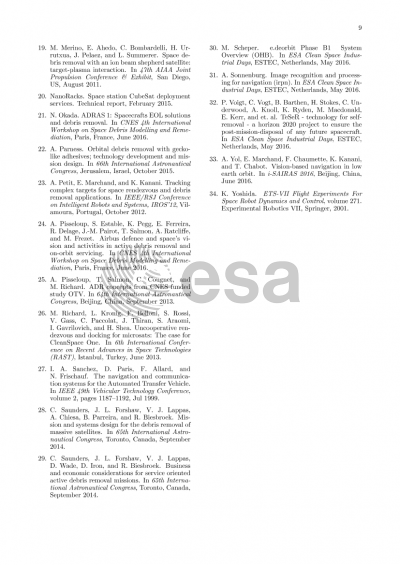Document details

Abstract
Since the beginning of the space era, a huge amount of debris has progressively been generated in space. Active Debris Removal (ADR) missions have been suggested as a way of limiting and controlling future growth in orbital space debris by actively sending up vehicles to remove debris. The EC FP7 RemoveDEBRIS mission, which started in 2013, draws on the expertise of some of Europe’s most prominent space institutions in order to demonstrate key ADR technologies in a low-cost ambitious manner.
The RemoveDebris mission launches to the International Space Station (ISS) in mid-2017 where shortly after it will be deployed via the NanoRacks Kaber system into an orbit of around 400 km. The mission will perform its core experiments sequentially, utilising two CubeSats as artificial debris targets: net capture, harpoon capture, vision-based navigation, dragsail de-orbiting. The mission comes to an end in early 2018 with all space entities having naturally de-orbited.
This paper is split into three distinct segments: a final review of the satellite and subsystems, a review of the launch procedures, an overview of the operations sequence and experimental timelines. In the first section, the completed satellite will be reviewed with examination of the capability of the platform (chaser), the CubeSats (targets) and the on-board experiments. The second section will focus on the specifics of the launch via NanoRacks and respective the NASA safety reviews. The final section will outline the planned operational timeline. There will be a focus on what experiments will be performed, what types of data will be collected and the success criteria for the experiments.
The RemoveDEBRIS mission aims to be one of the world’s first in-orbit demonstrations of key technologies for active debris removal and is a vital prerequisite to achieving the ultimate goal of a cleaner Earth orbital environment. It further aims to have the first demonstration of net or harpoon capture technologies in space and the first 100 kg platform to be launched from the ISS.
Preview
